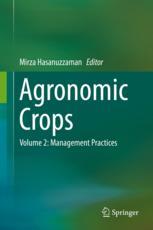Crop rotation has been practiced from the time immemorial, and every farmer is quite familiar with it. If only one crop is sown in a particular field year after year, the roots of the crop extract nutrients from the same depth of soil every year, exhausting the rhizosphere and thus causing reduction in the crop yield. In order to maintain the achievable yield potential, it is therefore necessary to take measures to improve soil fertility and productivity. It can be done by leaving field fallow and by adding nutrients in the form of organic manures and chemical fertilizers. In view of rapidly growing population of world fallowing a large area for a long period of time is not practicable. Crop rotation may be defined as a system of raising crops in a regular order one after the other on the same piece of land keeping in view that fertility of land may not be adversely affected and farmers profit out of land may not be reduced. We classify the crops according to the residual effect on the soil, i.e., Exhaustive rotation: It includes more number of exhaustive crops which take up the plant food nutrients and leave the soil poor in fertility, e.g., wheat, cotton, field mustard, and maize. Restorative rotation: It includes those crops which improve the soil fertility. These include leguminous crops and exhaustive crops. Managing croplands according to nature’s principles will reduce weed problems in all crops, and crop rotation has long been recognized for its ability to prevent weeds from developing to serious levels. Crop rotation limits the build-up of weed populations and prevents major weed species shifts. In a crop rotation, the timing of cultivation, fertilization, herbicide application, and harvesting changes from year to year. Rotation thus changes the growing conditions year to year, a situation to which few weed species easily adapt. Rotations that include clean-cultivated annual crops, tightly spaced grain crops, and grazed perennial sod crops create an unstable environment for weeds. Additional weed control may be obtained by including short-season weeds smothering crops such as sorghum sudan grass.

